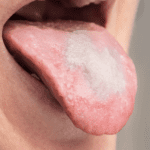Human Immunodeficiency Virus (HIV) is a global health challenge that has profoundly impacted millions of lives across the world. First identified in the early 1980s, HIV has since become a pandemic. This virus targets the immune system, specifically the CD4 cells (T cells), compromising the body’s ability to fight off infections and certain cancers.
HIV has significant implications for various healthcare practices, including dentistry. Dentists and dental healthcare professionals play a crucial role in preventing the transmission of HIV and providing appropriate care to patients living with the virus. This article aims to provide a comprehensive understanding of HIV in the context of dentistry, emphasizing precautions and optimal patient care.
Understanding HIV
History and Discovery
HIV/AIDS (Acquired Immunodeficiency Syndrome) was first identified in the United States in the early 1980s. However, the virus likely circulated in some populations much earlier. It was initially characterized by unusual infections and cancers observed in a group of gay men in Los Angeles and New York. The Centers for Disease Control and Prevention (CDC) in the United States published a report in 1981 outlining this unusual clustering of diseases, marking the beginning of the recognition of AIDS as a new syndrome.
In 1983, scientists identified the virus responsible for AIDS, which was later named Human Immunodeficiency Virus (HIV). The discovery revolutionized our understanding of the disease, its transmission, and potential treatments.
Modes of Transmission
HIV is primarily transmitted through specific body fluids, including:
- Blood
- Sexual Fluids
- Breast Milk
- Pregnancy and Childbirth
- Organ and Tissue Transplants
- Occupational Exposure
Blood
Sharing needles or syringes contaminated with HIV-infected blood is a significant mode of transmission, especially among intravenous drug users.
Sexual Fluids
Unprotected sexual intercourse with an infected individual is a common mode of transmission, including vaginal, anal, and oral sex.
Breast Milk
HIV can be transmitted from mother to child during childbirth or breastfeeding.
Pregnancy and Childbirth
HIV can also be transmitted from an infected mother to her child during pregnancy or childbirth.
Organ and Tissue Transplants
Although rare, HIV transmission can occur through organ or tissue transplants from infected donors.
Occupational Exposure
Healthcare workers may be at risk of HIV transmission through accidental needlesticks or contact with infected blood.
Understanding these modes of transmission is vital for implementing effective preventive measures.
Prevention and Precautions
Preventing HIV transmission involves a multifaceted approach that includes education, behavioral changes, and medical interventions. Some crucial preventive measures include:
- Safe Sex Practices
- Regular Testing
- PrEP (Pre-Exposure Prophylaxis)
- PEP (Post-Exposure Prophylaxis)
- Needle Exchange Programs
- Public Awareness and Education
- Male Circumcision
Safe Sex Practices
Using condoms consistently and correctly during sexual intercourse can significantly reduce the risk of HIV transmission.
Regular Testing
Knowing one’s HIV status through regular testing is vital. Early diagnosis helps in timely medical intervention and reduces the risk of transmission.
PrEP (Pre-Exposure Prophylaxis)
PrEP is a medication taken by HIV-negative individuals to reduce the risk of acquiring the virus, especially in high-risk populations.
PEP (Post-Exposure Prophylaxis)
PEP involves taking antiretroviral medications after potential exposure to HIV to prevent infection. It’s crucial within 72 hours of exposure.
Needle Exchange Programs
These programs provide clean needles to intravenous drug users to reduce HIV transmission associated with needle-sharing.
Public Awareness and Education
Public campaigns and educational programs play a vital role in raising awareness about HIV/AIDS, debunking myths, and promoting preventive measures.
Male Circumcision
Studies have shown that male circumcision can reduce the risk of HIV transmission from women to men.
By incorporating these preventive measures into public health policies and individual behaviors, the spread of HIV can be significantly curtailed.
HIV Diagnosis: A Vital Step Towards Treatment and Prevention
Diagnosing Human Immunodeficiency Virus (HIV) is a critical step in managing the disease, providing appropriate medical care, and preventing further transmission. Accurate and timely diagnosis allows for the initiation of antiretroviral therapy (ART), which can significantly improve the quality of life and longevity of individuals living with HIV. In this section, we will delve into the various methods and stages of HIV diagnosis, advancements in testing technologies, challenges, and the importance of early detection.
Stages of HIV Infection
HIV infection progresses through several stages, each with its own set of symptoms and implications:
- Acute HIV Infection
- Clinical Latency (Chronic HIV) Stage
- AIDS (Acquired Immunodeficiency Syndrome)
Acute HIV Infection
This is the earliest stage of HIV, occurring within the first 2 to 4 weeks after infection. Symptoms may resemble flu-like illness, including fever, fatigue, muscle aches, and swollen lymph nodes.
Clinical Latency (Chronic HIV) Stage
During this stage, the virus is still active but reproduces at very low levels. Individuals may not experience any symptoms, but the virus is gradually weakening the immune system.
AIDS (Acquired Immunodeficiency Syndrome)
This is the final stage of HIV infection, characterized by severe immune system damage. At this stage, individuals are more susceptible to opportunistic infections and certain cancers.
Methods of HIV Diagnosis
- Antibody Tests
- Antigen Tests
- Nucleic Acid Tests (NATs)
- Combined Tests (Antibody/Antigen Tests)
Antibody Tests
These are the most common tests used for HIV diagnosis. They detect antibodies that the body produces in response to HIV infection. Most rapid tests and home tests fall into this category.
Antigen Tests
These tests detect specific HIV proteins called antigens. The p24 antigen test is common and is often used during the acute phase of infection.
Nucleic Acid Tests (NATs)
NATs directly detect the genetic material of the HIV virus (RNA). They are highly accurate and are primarily used for early detection, confirming infection, and in specialized cases.
Combined Tests (Antibody/Antigen Tests)
These tests detect both HIV antibodies and antigens. They are highly sensitive and are useful for early detection.
Advancements in Testing Technologies
- Point-of-Care (POC) Testing
- Home Testing Kits
- Fourth-Generation Tests
Point-of-Care (POC) Testing
POC tests provide rapid results within minutes and can be performed outside a traditional laboratory setting. They are particularly valuable in resource-limited settings, enabling timely diagnosis and linkage to care.
Home Testing Kits
These allow individuals to test themselves in the privacy of their homes. Users collect a sample (often oral fluid) and perform the test, with results available within a short time.
Fourth-Generation Tests
These tests detect both antibodies and antigens, enhancing early detection during the acute phase of infection.
Importance of Early Detection
- Timely Initiation of Treatment
- Preventing Transmission
- Better Health Outcomes
Timely Initiation of Treatment
Early diagnosis allows for prompt initiation of antiretroviral therapy (ART), which can effectively suppress the virus and prevent disease progression.
Preventing Transmission
Identifying HIV-positive individuals early helps in providing counseling and education on preventive measures, reducing the risk of transmission to others.
Better Health Outcomes
Early treatment significantly improves the quality of life and reduces mortality rates among those living with HIV.
Challenges and Future Prospects
- Stigma and Discrimination
- Access to Testing
- Testing Compliance and Follow-Up
Stigma and Discrimination
Fear of stigma often deters individuals from seeking testing, hindering early diagnosis and treatment initiation.
Access to Testing
In some regions, especially low-income areas, access to testing facilities and advanced testing technologies remains a challenge.
Testing Compliance and Follow-Up
Ensuring individuals adhere to testing recommendations and follow up for confirmatory testing and treatment is an ongoing challenge.
Advancements in testing technologies, increased awareness, and destigmatization efforts are crucial in overcoming these challenges and achieving widespread and timely HIV diagnosis.
HIV and Dentistry
Dentists can play a crucial role in identifying signs and symptoms of HIV in the mouth during oral examinations. While dentists are not responsible for directly diagnosing HIV, they can recognize indicators that may prompt further testing and assessment by a healthcare professional, such as an HIV specialist or general practitioner. Here’s how dentists can identify potential signs of HIV in the oral cavity:
- Oral Lesions and Ulcers
- Gingival and Periodontal Changes
- Salivary Gland Enlargement
- Hairy Leukoplakia
- Oral Warts
- Unusual Oral Infections or Recurrences
- Persistent Dry Mouth and Thrush
- General Health History and Risk Assessment
- Referral for HIV Testing
Oral Lesions and Ulcers
Individuals with HIV may develop oral lesions and ulcers that manifest in various forms, including:
- Oral Candidiasis (Thrush)
- Herpes Simplex Virus (HSV) Infections
- Kaposi’s Sarcoma
Oral Candidiasis (Thrush)
White patches in the mouth that can be scraped off.
Herpes Simplex Virus (HSV) Infections
Painful, fluid-filled blisters or ulcers.
Kaposi’s Sarcoma
Red or purple patches or lumps that may bleed easily.
Gingival and Periodontal Changes
HIV-positive individuals may experience more severe and rapidly progressing gingivitis and periodontitis, characterized by:
Bleeding Gums
Gums that bleed easily, especially during brushing or flossing.
Receding Gums
Gums pulling away from the teeth, making them appear longer.
Loose Teeth
Weakening of the bone and ligaments that support the teeth.
Salivary Gland Enlargement
Enlargement of the salivary glands may occur, causing swelling in the cheeks or jaw area. This can be a noticeable sign during an oral examination.
Hairy Leukoplakia
Hairy leukoplakia appears as fuzzy, white patches on the sides of the tongue. While it’s painless, its presence can indicate a weakened immune system often associated with HIV.
Oral Warts
Warts in the oral cavity, caused by the human papillomavirus (HPV), can be more common and aggressive in HIV-positive individuals.
Unusual Oral Infections or Recurrences
Frequent or unusual oral infections, particularly those that do not respond to standard treatment, may be an indicator of a weakened immune system associated with HIV.
Persistent Dry Mouth and Thrush
Chronic dry mouth and persistent oral thrush (white patches) can be indicative of immune suppression seen in HIV-positive individuals.
General Health History and Risk Assessment
Dentists should also inquire about the patient’s general health history, including any known HIV status, potential exposure to HIV, or risky behaviors, such as unprotected sexual intercourse or intravenous drug use.
Referral for HIV Testing
If a dentist suspects potential signs of HIV during an oral examination, they should encourage the individual to seek further medical evaluation and an HIV test from an appropriate healthcare professional, such as an HIV specialist or general practitioner.
Early detection of HIV is crucial for timely medical intervention and appropriate management of the disease. Dentists, along with other healthcare providers, can contribute to this by being vigilant during oral examinations and encouraging HIV testing in at-risk individuals.
Precautions and HIV Infection Control in Dentistry
Dentistry involves close contact with blood, saliva, and mucous membranes, making it a potentially risky environment for the transmission of HIV. Dental procedures often involve exposure to a patient’s blood, and even a small amount of blood can pose a risk. As such, dentists and their teams need to follow stringent infection control protocols to minimize the risk of HIV transmission within the dental setting.
Infection control in dental practice is of utmost importance to prevent the transmission of HIV and other bloodborne pathogens. Key precautions and practices include:
- Universal precautions
- Hand hygiene
- Instrument sterilization
- Single-use materials
- Safe disposal of sharps
Universal precautions
Treating all patients as if they are potentially infectious. This involves the use of personal protective equipment (PPE) such as gloves, masks, goggles, and gowns.
Hand hygiene
Thorough handwashing and use of hand sanitizers before and after patient contact is crucial to prevent the spread of infections.
Instrument sterilization
Proper sterilization of dental instruments and equipment is essential to eliminate any potential sources of infection.
Single-use materials
Utilizing single-use, disposable materials wherever possible to prevent cross-contamination.
Safe disposal of sharps
Proper disposal of needles and other sharps in puncture-resistant containers to prevent accidental needlesticks.
These precautions, along with strict adherence to infection control protocols, significantly reduce the risk of HIV transmission in dental settings.
HIV Treatment and Management
- Antiretroviral Therapy (ART)
- Challenges and Side Effects
- Ongoing Research and Innovations
Antiretroviral Therapy (ART)
Antiretroviral therapy (ART) is the primary treatment for HIV. ART involves using a combination of antiretroviral drugs to suppress the replication of the virus in the body, thereby reducing the viral load and maintaining a healthy immune system. It’s a lifelong commitment and requires strict adherence to the prescribed regimen.
ART has transformed HIV from a fatal disease to a chronic, manageable condition. When taken as prescribed, it can significantly improve the quality and length of life for those living with HIV.
Challenges and Side Effects
While ART has been a game-changer in HIV treatment, it’s not without challenges. Common side effects include nausea, fatigue, diarrhea, and potential long-term complications like cardiovascular disease and bone disorders. Adherence to the medication regimen can also be difficult due to factors such as drug costs, stigma, and the requirement for strict daily schedules.
Ongoing Research and Innovations
Research in the field of HIV/AIDS is ongoing, focusing on developing new antiretroviral drugs, investigating potential vaccines, and finding a cure. Gene therapies, immunotherapies, and novel drug delivery systems are being explored to enhance treatment efficacy and reduce side effects.
Societal Impact and Stigma
HIV/AIDS has a profound impact on individuals, families, and communities. The stigma associated with HIV remains a significant barrier to prevention, testing, treatment, and support. Fear of discrimination often deters individuals from getting tested and seeking appropriate medical care.
Efforts to combat stigma involve education, awareness campaigns, legal protections, and support for affected individuals and communities. Destigmatizing HIV is critical to creating an environment where those affected feel comfortable seeking the necessary healthcare and support.
Global Impact and Challenges
While significant progress has been made in the fight against HIV, it continues to be a global health challenge with varying impacts on different regions. Here are some key global perspectives on HIV:
High-Prevalence Regions
- Sub-Saharan Africa
- Asia and the Pacific
Sub-Saharan Africa
This region bears the highest burden of HIV/AIDS, with a large proportion of the global HIV-positive population. Factors contributing to its prevalence include limited access to healthcare, lack of awareness, and social and economic inequalities.
Asia and the Pacific
This region also faces significant challenges, with a growing number of people living with HIV. Stigma, discrimination, and cultural barriers often hinder effective prevention and treatment efforts.
Vulnerable Populations
Certain populations remain particularly vulnerable to HIV:
- Men who have sex with men (MSM)
- Sex Workers
- People who Inject Drugs (PWID)
- Transgender Individuals
Men who have sex with men (MSM)
This group is at higher risk due to factors such as societal stigma and discrimination, limited access to healthcare, and a lack of targeted prevention programs.
Sex Workers
Sex workers face increased risk due to the nature of their work and limited access to healthcare services.
People who Inject Drugs (PWID)
Injection drug use and needle sharing pose a significant risk for HIV transmission among this group.
Transgender Individuals
Transgender individuals often face stigma and discrimination, which can deter them from accessing healthcare and prevention services.
Challenges in Pediatric HIV
Preventing mother-to-child transmission (PMTCT) has made great strides in reducing pediatric HIV infections. However, challenges remain, particularly in resource-limited settings where access to healthcare and antenatal care is limited. Ensuring that all pregnant women have access to PMTCT services is crucial in eliminating pediatric HIV infections.
The Road Ahead: Eliminating HIV
The 90-90-90 Targets
In 2014, UNAIDS introduced the 90-90-90 targets as a global strategy to end the AIDS epidemic by 2030. The targets are as follows:
- 90% of people living with HIV will know their status.
- 90% of people diagnosed with HIV will receive sustained antiretroviral therapy (ART).
- 90% of people receiving ART will have viral suppression.
Reaching these targets is essential in achieving epidemic control and ultimately ending HIV/AIDS as a public health threat.
The Role of Vaccines
While effective HIV vaccines remain elusive, ongoing research continues to explore potential candidates. Developing a safe and effective HIV vaccine is considered one of the most promising strategies for long-term control of the epidemic. However, the complex nature of HIV and its ability to mutate rapidly make vaccine development a challenging endeavor.
Combination Prevention
To effectively combat HIV, a combination of prevention strategies is crucial. This includes:
- Behavioral Interventions
- Biomedical Interventions
- Treatment as Prevention (TasP)
- Regular Testing and Early Treatment
Behavioral Interventions
Promoting safe sex practices, needle exchange programs, and harm reduction strategies for high-risk populations.
Biomedical Interventions
PrEP, PEP, and access to condoms and clean needles.
Treatment as Prevention (TasP)
Widespread access to ART not only benefits individuals but also reduces community viral load, lowering the risk of transmission.
Regular Testing and Early Treatment
Encouraging regular HIV testing and immediate initiation of treatment upon diagnosis.
The Importance of Education and Awareness
Education and awareness campaigns are fundamental in the fight against HIV. They help dispel myths, reduce stigma, and encourage people to take proactive steps in preventing HIV transmission and accessing care and support.
Conclusion
HIV remains a significant public health concern globally, and the field of dentistry plays a crucial role in preventing its transmission and providing appropriate care to those affected. Understanding the modes of transmission, following strict infection control protocols, and tailoring patient care to the unique needs of individuals living with HIV are essential steps in addressing this complex health issue. Dentists and dental healthcare professionals must stay informed about the latest developments and guidelines to provide the best possible care while ensuring the safety and well-being of both their patients and themselves.





